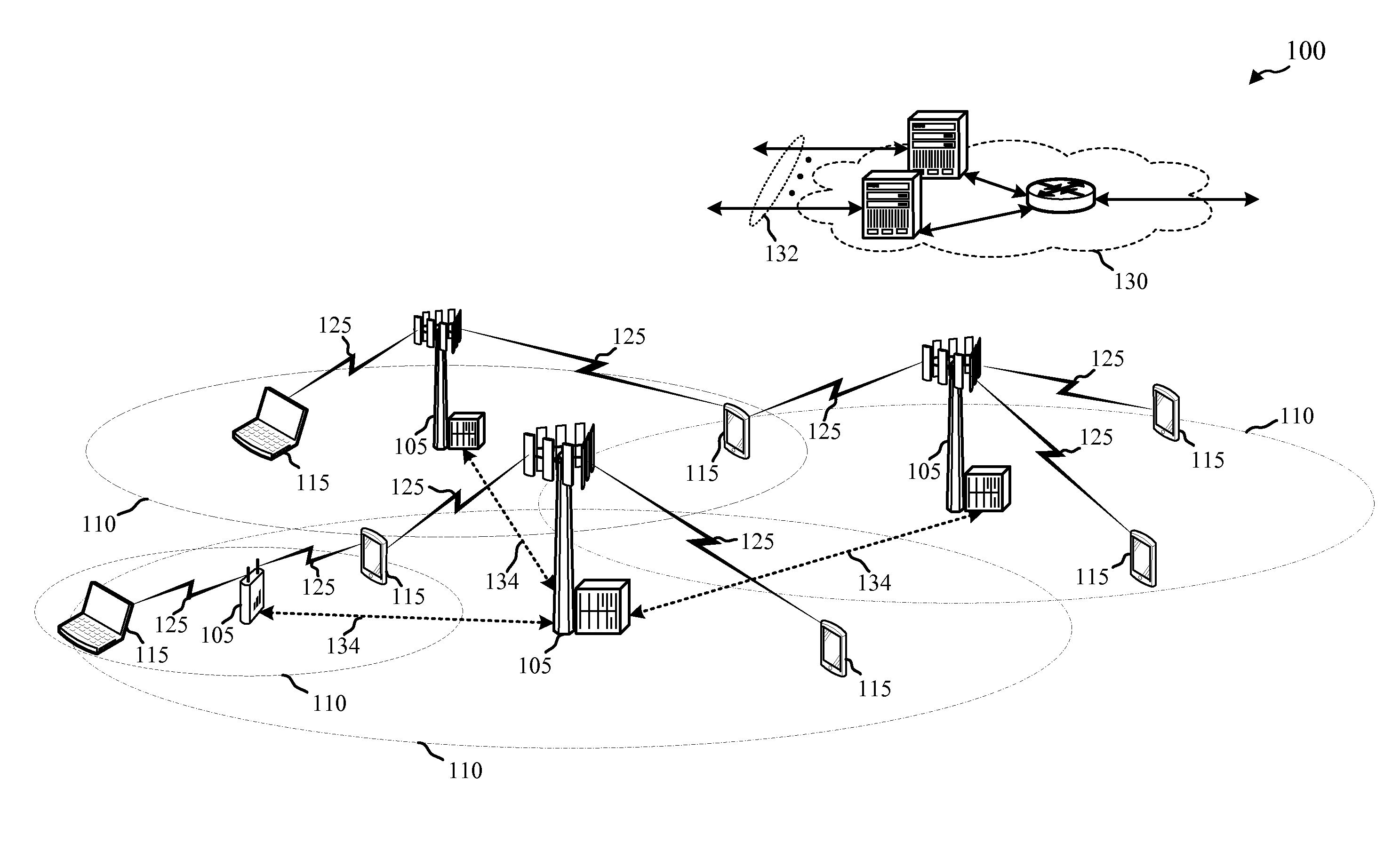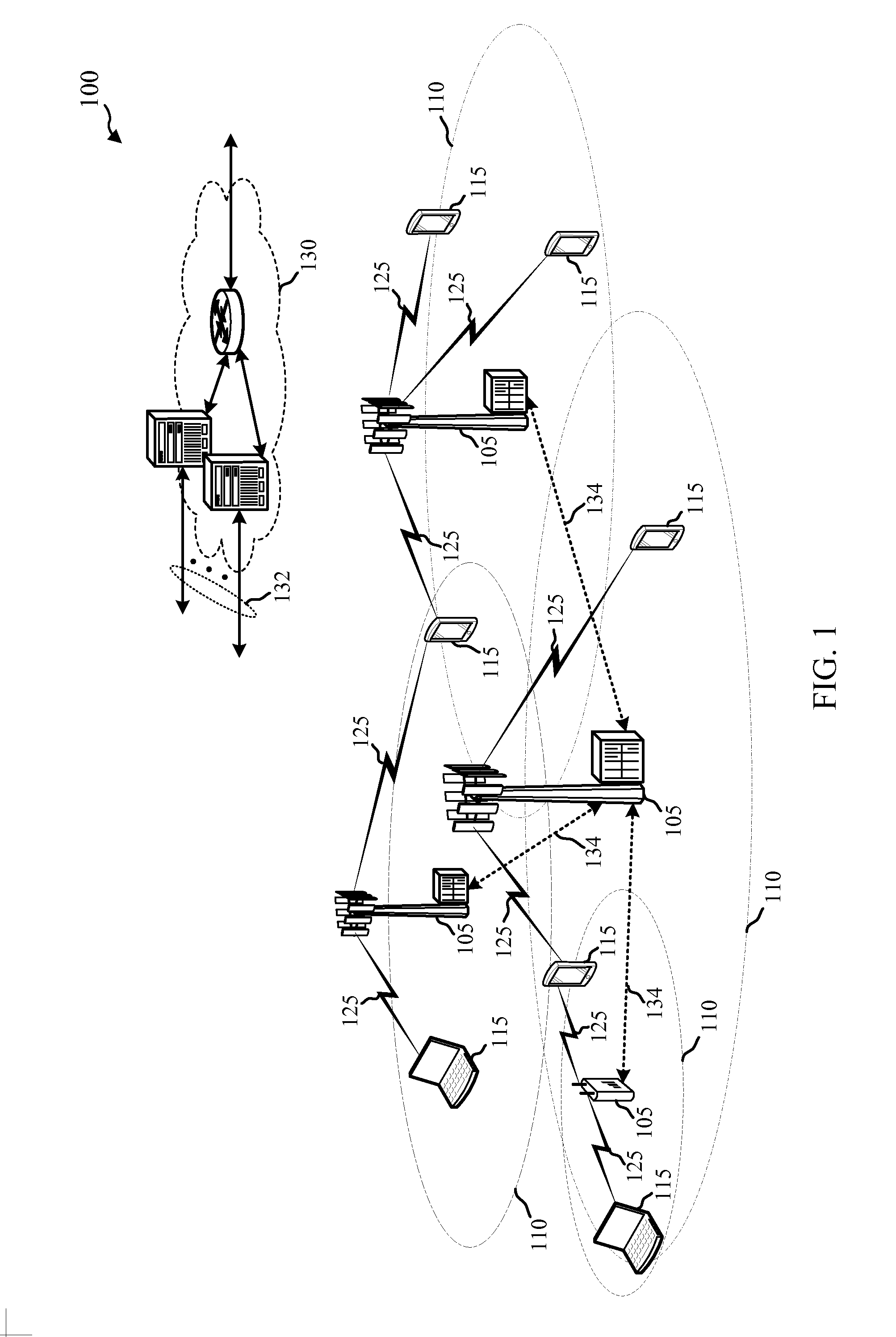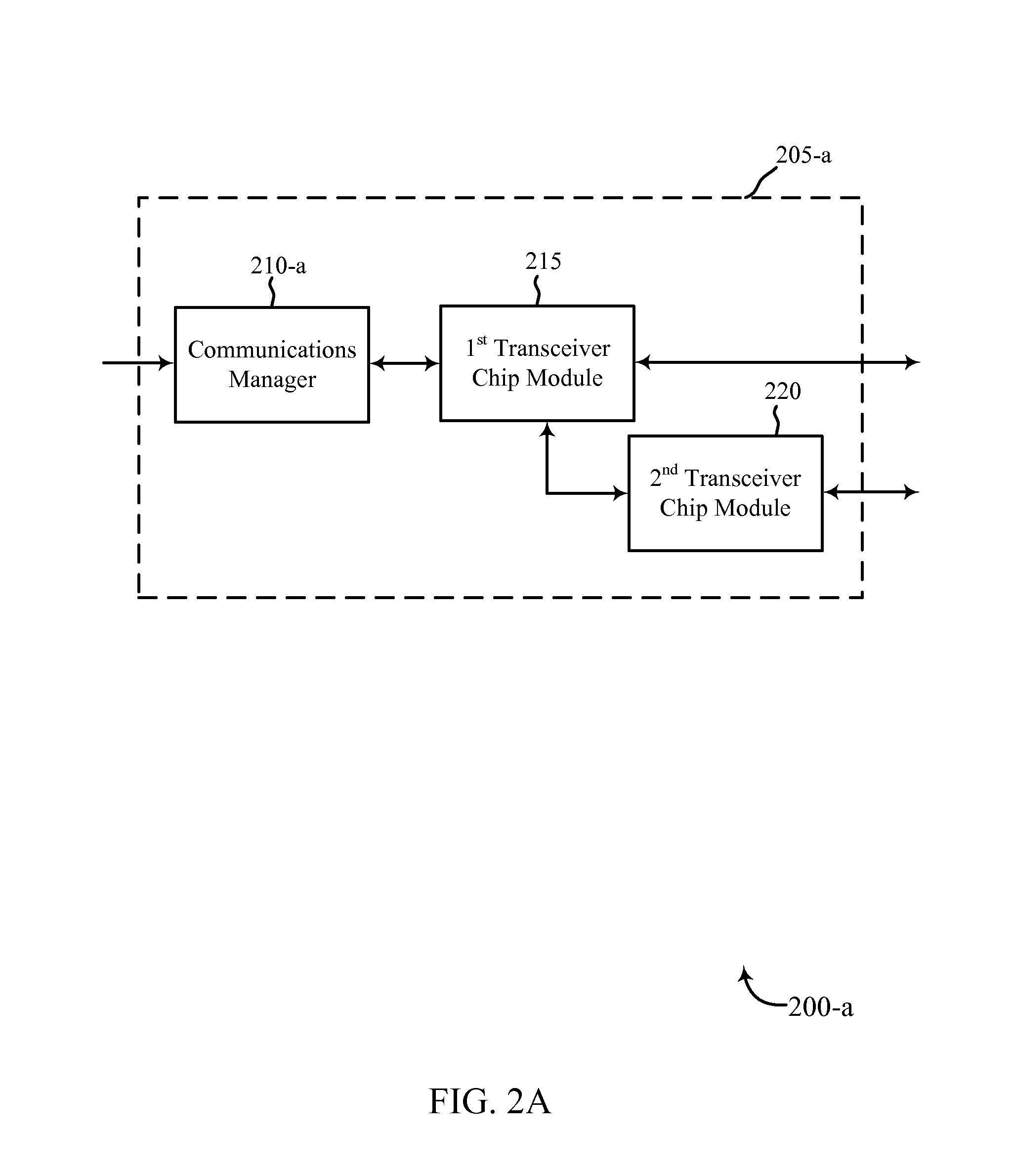Transceiver configuration for millimeter wave wireless communications
a wireless communication and transmission device technology, applied in the field of wireless communication systems, can solve the problems of increasing hardware components, affecting the operation of the transmission device, and increasing the hardware footprint, so as to reduce the hardware footprin
- Summary
- Abstract
- Description
- Claims
- Application Information
AI Technical Summary
Benefits of technology
Problems solved by technology
Method used
Image
Examples
Embodiment Construction
[0078]Evolving wireless communication systems may communicate using one or more of several mmW frequency ranges, e.g., 28 GHz, 40 GHz, 60 GHz, etc. Different mmW frequency ranges may be used for different communication systems protocols, e.g., Wi-Fi communication systems, telecommunication systems, etc. Communications using such mmW frequencies, however, introduce design difficulties from an operational perspective (e.g., limited propagation distance) as well as from a hardware perspective. For example, processing signals in the mmW frequency range requires careful consideration and selection of components, component / module spacing limitations, etc., in order to reduce signal loss. Other considerations include spacing and positioning of antenna arrays for each frequency range in a device that has limited available space and that avoids interference caused by the user, e.g., how a user may typically hold the device.
[0079]Millimeter wave systems may be used for a variety of functions,...
PUM
 Login to View More
Login to View More Abstract
Description
Claims
Application Information
 Login to View More
Login to View More - R&D
- Intellectual Property
- Life Sciences
- Materials
- Tech Scout
- Unparalleled Data Quality
- Higher Quality Content
- 60% Fewer Hallucinations
Browse by: Latest US Patents, China's latest patents, Technical Efficacy Thesaurus, Application Domain, Technology Topic, Popular Technical Reports.
© 2025 PatSnap. All rights reserved.Legal|Privacy policy|Modern Slavery Act Transparency Statement|Sitemap|About US| Contact US: help@patsnap.com



